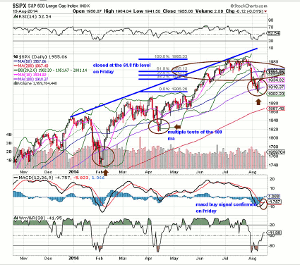Bob Lang of ExplosiveOptions.net breaks down the mental part of the options trading game, not just the emotional side of it, but also the value and benefit of charting, research, and learning how to cope with uncertainty.
One of the things option traders and stock traders struggle with is the mental part of the game. There is nobody out there who trades each day that is unaffected by the emotions displayed by the markets. That is because the market, price action, and volume are a sea of emotions displayed on a chart. We can visibly see moments of fear and greed in the minds of players just by seeing the green and red bars (buys and sells) in price movements. The parameters do not change. Think of it as a football field, with fear on one side and greed on the other. We are all trying to move up/down the field with the minimal amount of emotion, but we are often pulled to one sideline or the other for various reasons.
But to be successful, we need to overcome the need to be 100% informed. Much of what the market presents us with, of course, is uncertainty. Nobody can tell the future with 100% accuracy, hence the right side of the chart is a mystery. We are constantly looking for clues and listening to anyone we deem smarter than us who might make our job a bit easier. Do we listen to Carl Icahn who says a big correction is coming? We already know that will happen some day, but do we act when he says it? Is Icahn the most accurate market timer? Does it make sense to follow a David Tepper or a George Soros when they say one day 'do not be too long now' and then a month later 'I didn't really mean that'?
When option trading, I need to study the charts and listen to the market, which will guide me to better results. While news is important to understand and digest, we have to put it in context and relevance. More importantly, how is the market reacting to the news at certain moments in time? Take the first week in August for example. After getting pasted for about 40 handles lower on huge volume August 7, there was some news that dropped futures overnight another 10-13 handles. It appeared, the SPX 500 (SPX) would open under 1900 for the first time since it first crossed it in late May.
But alas, the markets were vastly oversold at that point, sentiment was as bearish as could be, VIX was up nearly 40% in a week and put/call ratios clocked in with more than a 1 reading for a few days. Basically, conditions that could not last too long as the rubber band was stretched back too far. As a contrarian looking at trends, I saw that the odds favored a turn up-swift and strong. Markets were falling on bad and good news, it didn't really matter, and were pasted in a short four-to-six sessions, if you were long stocks or call options you started questioning yourself, because if this is the end, who wants to be left holding the bag? Yet, with the markets so oversold, the news overnight had a negligible effect on the 8th, and rallied sharply (coincidentally, off the 100 MA, which had been a great spot to buy modest 3-4% pullbacks this year-see the chart).
Point being-the news was important but understanding the market conditions was more important, because just as you might have thought this market would fall apart (everyone on CNBC seemed to think this way), you would have been badly burned if you played the downside last week. How would this affect your mindset? Frustrated? Your head would have exploded. I suggest paying attention to the message of the markets, be open-minded to conditions, and allow yourself a chance to be successful. I say it often, option trading is not a game of perfect. But prepare yourself-and your mind-for battle and you can more frequently be on the winning side.
By Bob Lang of ExplosiveOptions.net











